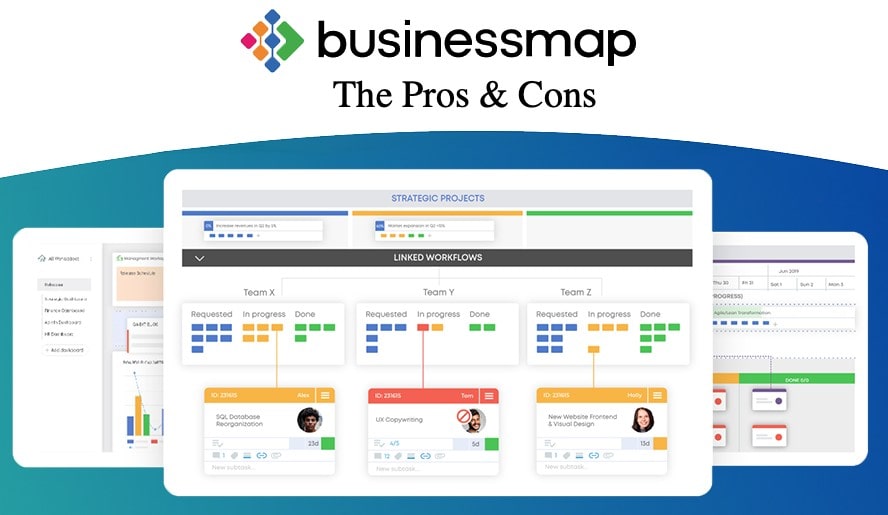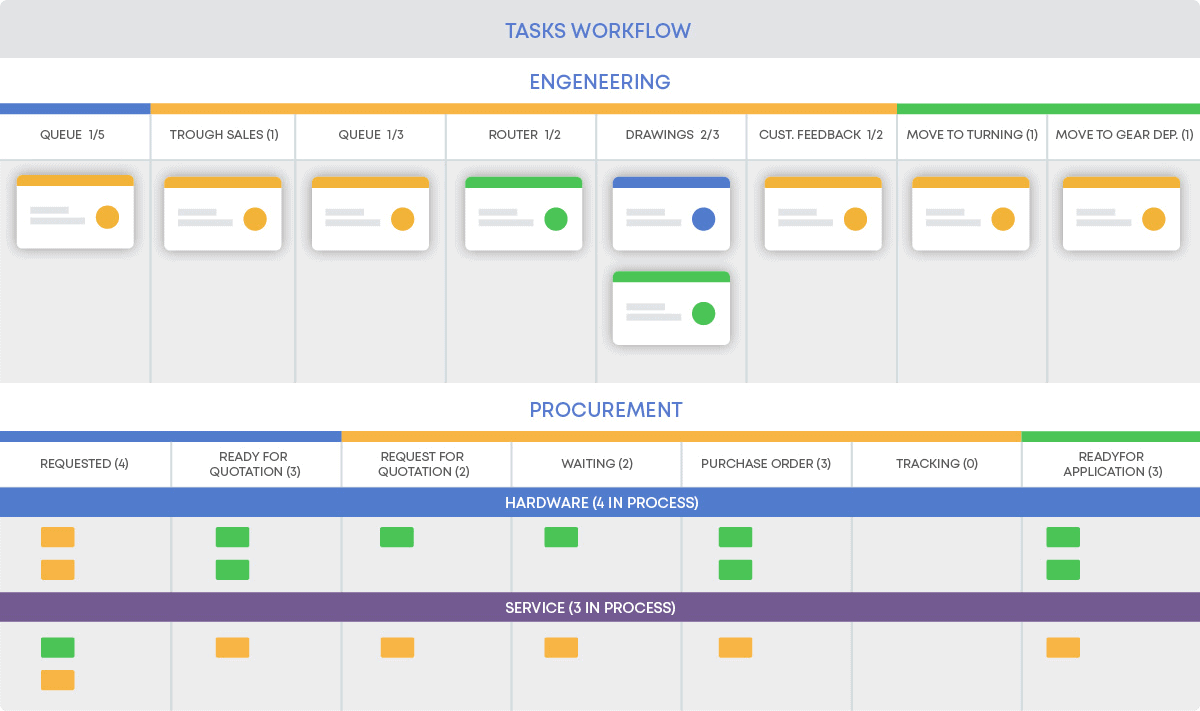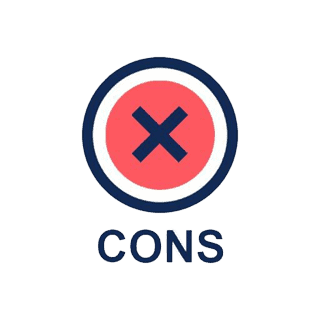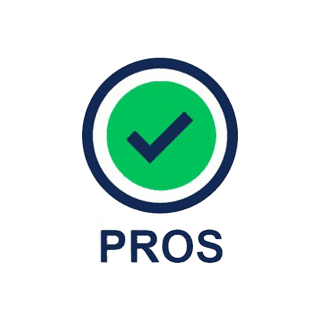
Gaining visibility across all teams and projects is crucial for businesses of all sizes, as it helps ensure that everyone is working towards the same objectives and in alignment with the overarching strategy. This not only streamlines execution but also allows businesses to deliver results faster, providing a significant competitive advantage in the business market. A scalable tool like Businessmap (formerly Kanbanize) is essential in this regard, as it accommodates growth in both horizontal and vertical dimensions, allowing for seamless expansion from single teams to thousands and even reaching the executive level without compromising functionality or efficiency.
Businessmap is a powerful yet user-friendly tool for agile project management. It helps organize and streamline projects more easily and transparently. However, like any software, it has its pros and cons. This article will provide more insights to help you decide if this is the right tool for your team.
If Businessmap pricing plans seem too costly, we suggest exploring AceProject as an alternative. It offers a more budget-friendly solution since it doesn’t charge fees according to the number of users.
Businessmap – Kanban Software for Agile Project Management
Businessmap is a cutting-edge agile project management software that integrates Kanban principles with OKRs (Objectives and Key Results) to create a holistic, agile approach. Trusted by millions of users worldwide, including Fortune 50 companies, Businessmap has established itself as a reliable and efficient tool for managing projects, optimizing workflows, and driving business results. Built upon the three pillars of scale—connecting strategy with execution, gaining visibility across projects and portfolios, and optimizing delivery workflows—Businessmap is an invaluable partner in any lean/agile implementation.

The platform facilitates alignment and collaboration by deploying corporate strategy through cascading initiatives that reach every level of the organization. The software also offers comprehensive visibility into projects and portfolios, easily tracking dependencies, progress, and risks. Additionally, Businessmap empowers teams to take control of their workflows and continuously optimize them, resulting in significant performance boosts.
The Cons or Disadvantages of Businessmap

While Businessmap has proven to be an effective and powerful agile project management tool, it’s important to acknowledge some of the challenges users may face when implementing it.
- Limited resource management and timeline features: Businessmap may not offer comprehensive resource allocation and project scheduling capabilities, which could hinder efficient planning.
- Dependency on third-party integrations: The software often relies on external applications for integrations, which may lead to compatibility challenges, increased setup complexity, or additional management efforts.
- Insufficient solutions for short-term projects: Businessmap might lack the necessary tools or functionalities to effectively cater to organizations focusing on rapid task completion.
- Restricted report customization: The software’s built-in reporting tool has limitations that can prevent users from generating highly tailored reports according to their unique needs.
- Individual card-based time tracking: Time tracking in Businessmap is task-specific, which can be cumbersome and time-consuming for users managing multiple tasks at once.
- Complex analytics panel setup: Although powerful, the analytics panel in Businessmap may require users to configure it based on their specific needs.
The Pros or Advantages of Businessmap

Businessmap offers a wide array of advantages as an agile project management tool, providing users with flexibility, powerful reporting, ease of use, clear communication, and exceptional support. Here are some of its top benefits:
- Versatile flexibility for diverse use cases: Businessmap’s adaptability allows it to accommodate various project types and business scenarios, making it suitable for organizations with diverse requirements, from software development to marketing and beyond.
- Comprehensive reporting engine: The software features a robust reporting engine that provides users with in-depth insights and analytics, enabling data-driven decision-making and facilitating continuous improvement in project management.
- Customizable individual workflows: Businessmap enables users to create tailored workflows for each team or project, allowing for a high level of customization that ensures alignment with the unique needs of specific teams or projects.
- User-friendly workflow and rule definition: The platform is designed for ease of use, making it simple for users to define workflows and establish rules that guide efficient project management and ensure adherence to best practices.
- Straightforward task execution and tracking: Businessmap allows for easy monitoring and management of task progress and status, ensuring that projects remain on track and stakeholders stay informed of ongoing developments.
- Streamlined and clear communication: The software facilitates easy-to-follow communication among team members, fostering collaboration, reducing potential misunderstandings, and promoting a cohesive working environment.
- Exceptional human support: Businessmap provides dedicated human support throughout the user experience, including during the 14-day trial period. The support team is readily available to assist users with any questions or concerns, ensuring a smooth onboarding process and ongoing success with the platform.
- Regular updates and communications: Businessmap is committed to continuous improvement. Through regular communications, it keeps users informed of new features, enhancements, and updates. This ensures that users are always updated with the latest developments and can maximize their software utilization.
Businessmap Key Features
Businessmap boasts a comprehensive suite of features designed to streamline workflows, enhance communication, and optimize performance. These include:
- OKRs: Implement Objectives and Key Results to ensure strategic alignment and focus on high-impact initiatives.
- Kanban boards: Real-time task tracking and status reporting for improved project management.
- Interlinked boards: Connect team and management-level Kanban boards for seamless collaboration.
- Workflow management: Consolidate team workflows with multi-layered Kanban boards.
- Timelines: Visualize all your initiatives and projects for better planning.
- Workspace management: Distribute and monitor your team and work across your entire organization.
- Dashboards & reporting: Access critical business metrics and reports in one central location.
- Kanban card functions: Customize work items and enhance team communication.
- Dependency management: Track cross-team dependencies via card links for improved visibility.
- Project forecasting: Develop probabilistic plans for future project delivery.
- Business rules: Automate processes and trigger actions based on specific events.
- Workflow analytics: Evaluate workflow performance using a range of Lean/Agile charts.
- Limiting work in progress: Minimize multitasking, address bottlenecks, and maintain a steady workflow.
- Integrations: Enhance your Kanban software by integrating with external systems.
- Email integration: Manage cards via email and respond to emails by adding comments to cards.
Businessmap Use Cases
Businessmap is designed to cater to a wide range of industries, from aerospace and construction to financing and IT services. Its adaptability allows it to address the unique needs of each sector, providing an array of use cases to streamline operations and enhance efficiency:
- Agile project management: Achieve process agility through the visualization of all company initiatives and projects, ensuring alignment with strategic objectives.
- IT operations: Manage demand and customer requests within IT departments, facilitating improved prioritization and resource allocation.
- Engineering: Accelerate product development with complete process transparency, enabling better collaboration and decision-making.
- Software development: Deliver high-quality software predictably by optimizing work flows and effectively managing project resources.
Businessmap Pricing and Costs
Businessmap offers lean pricing options tailored to fit various business needs, allowing organizations to choose the best plan. With a free trial available without the need for a credit card, users can test the software before committing to a paid plan. Pricing starts at $149 per month (billed annually) or $179 per month for up to 15 users.
- Standard: This plan is designed for organizations seeking to enhance visibility across projects and connect strategy with execution, providing essential features for effective project management.
- Enterprise: Customized pricing is available for organizations with large-scale operations, heightened security requirements, and advanced support needs, ensuring a tailored solution for complex business environments.
Recommended article: Businessmap Pricing Plans
Conclusion
If you’re looking for a versatile and powerful agile project management tool, Businessmap is a great solution to consider. With our insights into the software’s pros, cons, key features, use cases, and pricing options, you can decide whether it’s the right fit for your organization. By choosing Businessmap, you can enhance visibility, streamline team communication and collaboration, and optimize project execution, ultimately driving growth and success for your business.